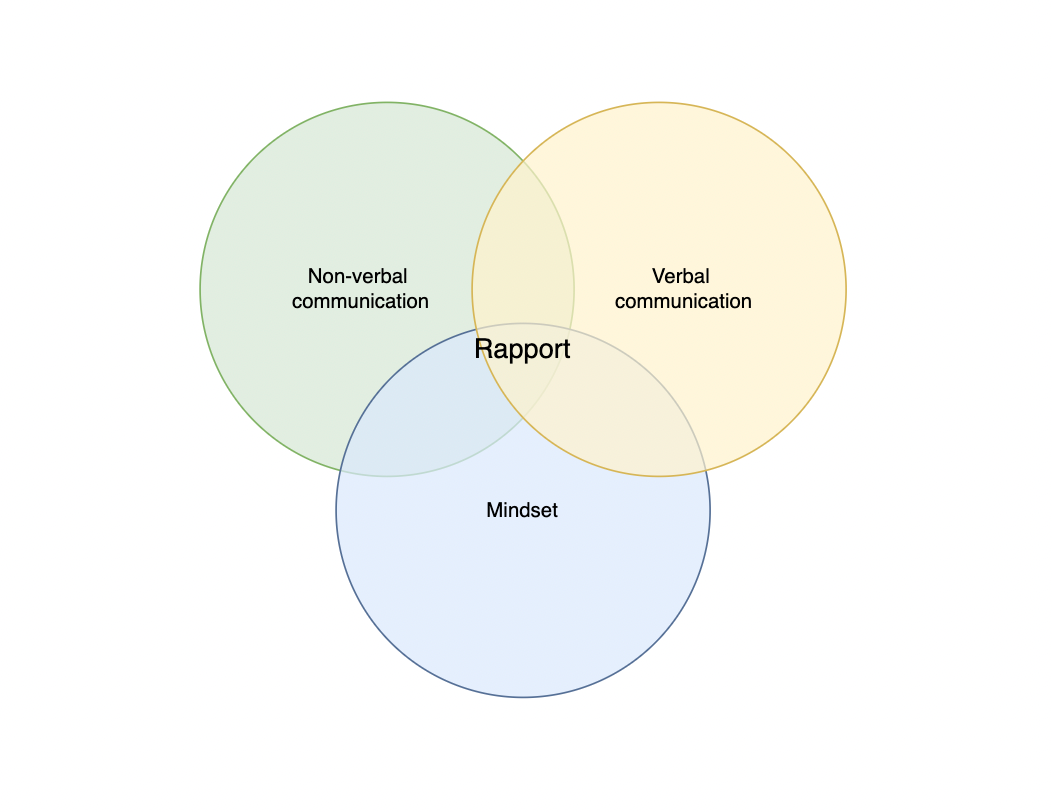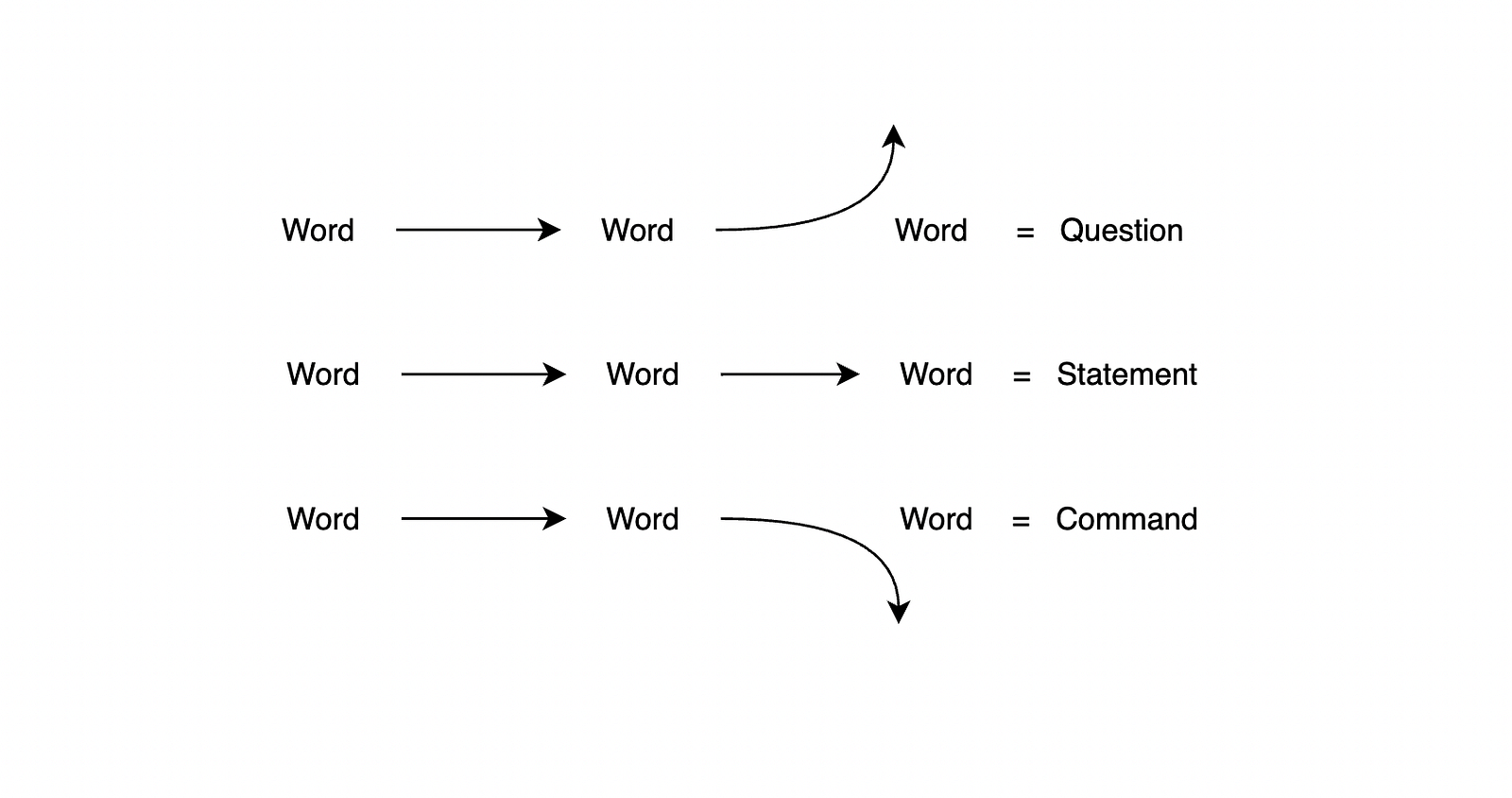In this three-part series, I will walk you through the basics of building rapport, the process of building trust. Rapport consists of three key elements. You can build rapport on every one of these three elements. In the following diagram I have created a visual model where you can see what rapport consists of:

This might look similar to the 7/38/55 rule. This rule states that the impact of our communication is for 7% our words, for 38% our tonality and for 55% our non-verbal communication.
In this post, I will start with verbal communication. Simply because I have several tips which I think everyone can benefit from. But first of all, all rapport starts with a simple mnemonic:
- Attention
- Respect
- Adaptation
Mirroring verbal communication
Sometimes building rapport is just as simple as just listening with the intent to understand. Stephen Covey has a great quote about this “Most people do not listen with the intent to understand; they listen with the intent to reply”. Everybody wants to be heard. So listening with the intent to truly understand someone else’s point of view is a simple trick that can make a huge difference.
Now imagine you’re living abroad and for 12 long months you haven’t spoken in your mother language. After those 12 months, you run into someone who finally speaks the same language as you do. You feel relieved, you feel an instant bonding since you both speak the same level. You joke about the same traditions and rituals you have since you are both from the same country. There is this warm feeling like you already know him on a certain level. This is because we are drawn to what’s similar and fear what’s different.
The same feeling can be created even if you do speak your mother tongue on a daily basis. Especially if it’s business-related, using the same terminology can be quite effective to get on the same line with someone. For me, as a developer, I often hear different pronunciations for the same words. Using the same pronunciation as the other person is a little mirroring trick to build rapport. Unless the pronunciation of the other person doesn’t make sense, in that case mirroring isn’t necessary.
Vary questions with mirroring
If you don’t find yourself in places where people use terminology there’s another great trick to mirror someone verbally. Repeating the last 3 or most important words of someone’s story with an upward inflection is also a mirror. This will make the other person elaborate more on the subject he’s talking about. Here’s an example:
Jane: Did you notice that my mother keeps talking about that thing that happened?
John: That thing that happened?
Jane: Yes, between her and the neighbours.
This technique is also referred to as parroting since you’re repeating someone’s words. I’ve talked about listening with the intent to understand. Summarizing someone’s story in the exact same words and tonality will make him or her feel understood.
How your tonality determines the interpretation

Looking at the image above, the way we use our voice also defines how someone interprets what we say. A great exercise is to record yourself with a voice recorder and check how you use your tonality. Some people state every sentence with an upward inflection which makes it sound like a question. This is sometimes completely unconscious, but until you are not aware of this, you cannot change it. Some people don’t do it with the sentence but with filler words, you see? If you’re not sure what I mean check out this short video.
What creates your tonality
Last but not least, mirroring someone verbally, can be done in many ways. So far, we've talked about what to say and with which tonality. If you want to focus more on tonality there are three core elements that create your tonality. Those elements are volume, speed and pitch. If you are a regular or fast speaker you might have noticed the following. Whenever you hear someone who speaks very slowly or quietly you get a little bit annoyed. In this case, it is because it's the opposite of what we favour personally. So whenever you want to build rapport with someone who has a different tonality than you do, mirroring their volume and speed is great for building rapport.
Hopefully, you have learned something new about how to build rapport verbally. In the next posts, we'll zoom in into building rapport non-verbally and with your mind.
Ciao!
